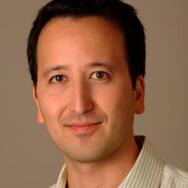An Alternative Dose Distribution Of Tight COVID-19 Vaccine Supply
An Alternative Dose Distribution Of Tight COVID-19 Vaccine Supply
SHP's Joshua Salomon and colleagues offer an alternative approach to COVID-19 vaccine distribution — modeling a flexible strategy that would result in an additional 23% to 29% of COVID-19 cases averted compared with the current fixed strategy,.

With concerns mounting about surging COVID-19 infections, the emergence of a more contagious variant, and sluggish distribution of new vaccines, SHP’s Joshua Salomon and colleagues have mapped out a way to gain more benefit from the first available doses of the Pfizer and Moderna COVID-19 vaccines.
Last month, the U.S. Food and Drug Administration issued an Emergency Use Authorization for the Moderna and Pfizer-BioNTech COVID-19 vaccines — a result dubbed “a miracle” by some health-care analysts as clinical trials for new vaccines typically take up to three years before they are approved for manufacture and distribution.
Although trial evidence for both vaccines indicate partial protection against COVID-19 illness after just one dose, both vaccines are authorized only in as two-dose series and have not yet been evaluated for single-dose use. So, in the United States, national distribution plans for the vaccine call for initially withholding 50% of the supply from states, only to be released three weeks later for use as second doses.
With the surge of COVID-19 cases nationwide, however, the researchers argue in their study published Jan. 4 in the Annals of Internal Medicine that this conservative approach delays giving the first doses to many who could gain substantial health benefits from earlier vaccination, such as the elderly, essential workers and those with pre-existing conditions and comorbidities.
“Current policies place a premium on eliminating any possible delays to delivering second doses,” Salomon and his colleagues write. “We find that under most plausible scenarios, a more balanced approach that withholds fewer doses during early distribution in order to vaccinate more people as soon as possible could substantially increase the benefits of vaccines, while enabling most to receive second doses on schedule.
The team developed a decision analytic cohort model to estimate the direct benefits of vaccination against COVID-19 under alternative strategies for national distribution. The current fixed strategy reserves 50% of each vaccine installment for second doses to be sent out to states after a three-week delay. The researchers looked at a flexible strategy that reserves only 10% of the supply for second doses during the first three weeks, increased to 90% during each of the next three weeks, and 50% thereafter. This alternative strategy was chosen as an illustration of many different ‘front-loaded’ strategies that might be considered.
Under a steady vaccine supply of 6 million doses per week, the flexible strategy would result in averting an additional 23% to 29% COVID-19 cases compared to the current fixed strategy.
Operation Warp Speed in mid-December had anticipated 7.9 million doses of the vaccine to be delivered in the first week after both vaccines were authorized for emergency use and some 12 million doses to be administered by the end of the year. We now know that we ended 2020 with just over 3 million vaccine doses administered — so the researchers’ modeling predictions must be understood in the context of slower-than-expected efforts to deliver the vaccine to individuals.
In the modeled distribution scenarios — fixed and flexible — with a steady supply of 6 million doses available each week, 24 million people would receive at least one dose by the eighth week, whereas 2.4 million additional people would receive two doses of vaccine under the flexible plan vs. the fixed plan because millions more would receive an initial dose during the first three weeks. With steady supply, all second doses would be administered on schedule (within three weeks of the first dose) in both strategies. If vaccine supply dropped to 3 million doses per weeks starting in week four, overall benefits would be reduced in both strategies — yet the flexible strategies would still avert an additional 27% to 32% of new COVID-19 cases compared with the fixed strategy.
The researchers caution that their analysis is limited by focusing only on direct benefits to vaccine recipients rather than including potential secondary benefits from avoiding transmission.
"Key uncertainties remain around the time course of protection afforded by the first dose of vaccine and loss of protection with extended time to the second dose," they write. "Nevertheless, we suggest a simple modification to current policy that has potential to significantly amplify urgently needed benefits from limited vaccine supply."
No Delays to Second Dose
Salomon emphasizes that their study does not suggest deliberately delaying second doses.
“Our goal is to have everybody receive the second dose on schedule, which is easy to ensure if the supply is relatively stable,” he said. “If vaccine supply declines unexpectedly, allocation plans might need to be adapted further to avoid delays in receiving second doses. But we found, across a wide range of supply scenarios, that it’s possible to get greater benefits by taking a more strategic approach to releasing available supply, while still enabling most people to complete their two-dose schedule in the same way that the trial participants did.”
He also notes that the study focuses on distribution plans at the national level, not at the level of hospitals, clinics, county or states, which have run into many bottlenecks during the early weeks of distribution. “It’s the first-level decision that Operation Warp Speed has taken — to stockpile half of all available doses for three or more weeks — that we hope they might reconsider. Any vaccine doses parked in freezers for weeks are benefits foregone at a time when we urgently need to counter the winter surge.”




